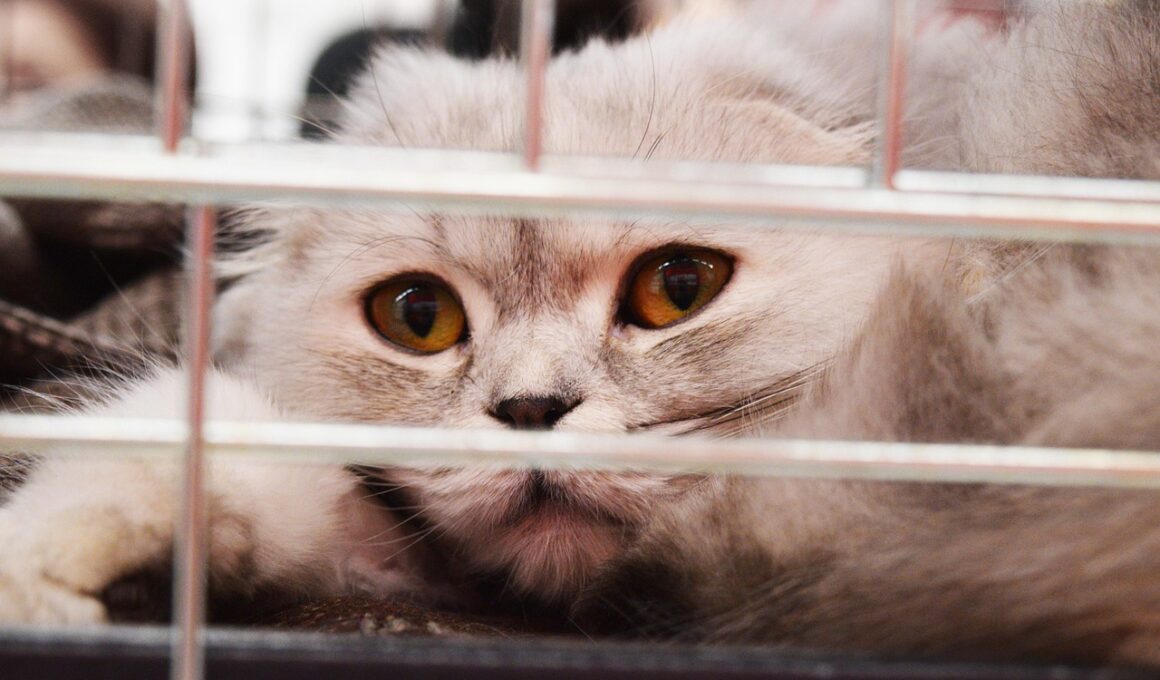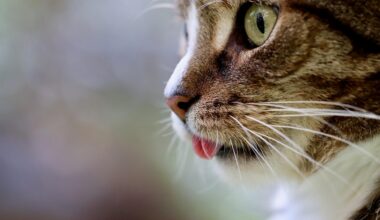Pet Insurance Myths and Facts for Adopted Cats
Adopting a cat is a rewarding experience, but many potential pet owners struggle with understanding pet insurance. A common myth is that all adopted cats automatically come with coverage. In reality, pet insurance is something you must purchase independently for your furry friend. Some might believe it’s optional, yet this can lead to hefty vet bills in emergencies. Furthermore, many assume that only expensive breeds require insurance, when in fact, any cat can experience health issues, regardless of their adoption status. It’s essential to consider various types of policies available. Some plans may only cover emergencies, while others can provide comprehensive coverage. Do your research and find a plan that suits your needs. Make sure to check the policy exclusions as well, as pre-existing conditions often are not covered. The misconception is that pet insurance is too costly, but there are affordable options available. It’s worth budgeting for this expense rather than facing unforeseen medical costs. In short, do not let myths deter you from looking into pet insurance for your adopted cat. It’s a crucial precaution for both your cat’s health and your financial protection.
Another important aspect to consider is that many believe pet insurance is too complex to navigate. This isn’t true; most companies offer user-friendly websites and customer support to help you understand your options. Additionally, some people think signing up for insurance is only needed when a cat is sick. In fact, getting it early can avoid potential problems arising later, easing the claim process. Another myth is that all veterinary care is covered. Pet insurance often excludes certain treatments or wellness checks, so reviewing your prospective plan’s comprehensive details is wise. Furthermore, many pet owners might think that claims are arduous or lengthy, but efficient procedures exist to streamline claims. Many companies now offer quick online submissions and direct vet payments, reducing delays. Some also believe pet insurance leads to unnecessary treatments, but responsible pet owners are generally aware of their pet’s needs. Access to a range of treatments can, in fact, help ensure better quality care. Adopting a cat should always be accompanied by a financial plan for coverage. If you understand these elements, you’ll likely find that pet insurance can meet the needs of you and your adopted cat.
Evaluating Pet Insurance Plans
When considering pet insurance for your adopted cat, understanding different options is critical. Various types of policies exist, catering to different needs and circumstances. Plans can vary from basic, accident-only coverage to more comprehensive policies covering genetics and preventive measures like vaccinations. Reading reviews and talking to fellow pet owners can provide valuable insights into particular insurance companies. Look for providers with robust customer service and quick claim response times. Importantly, understand the terms and conditions of each policy. Particular attention should be paid to waiting periods and coverage caps; make sure to clarify anything you don’t understand with a company representative. Another critical factor is premizing the enrollment process—many companies have timeframes for when applications can be made. If you’re adopting an older cat, insurance might have additional limitations, so inquire about these nuances before making decisions. Discounts are available through some organizations and veterinary clinics, which may minimize your overall costs. Remember to assess the various deductibles and how they impact your premiums. Finding the right plan will protect your adopted cat’s wellbeing and provide you with the peace of mind you deserve.
Many prospective cat adopters are concerned about the affordability of pet insurance. The misconception that all policies are expensive needs addressing. Rates often depend on various factors, including the breed and age of your cat and the location of your residence. Typically, younger cats may have lower premiums than older ones, so plan accordingly for future increases as your cat ages. Submit claims for actual expenses rather than presuming coverage equates to costs. It’s essential to budget for these contributing factors, as this can vary greatly across providers. Some families might overlook prevention as a part of their budgeting, but preventive care can lower veterinary bills in the long run. When seeking insurance, select a policy that aligns with your financial capacity and your cat’s specific needs. Be proactive rather than reactive in case a health issue arises. Don’t forget to account for annual increases in premiums, and factor that into future budgets. Pet insurance should never be viewed as a luxury, but rather a crucial aspect of responsible pet ownership. Keeping abreast of changing policies and limits ensures that you’re making the most informed decision.
Exploring Wellness Plans for Adopted Cats
A common question among cat adopters is whether their pet needs a comprehensive plan versus a straightforward accident cover. Wellness plans are an excellent option, typically offering preventive care that includes vaccinations, dental cleanings, and check-ups. Many pet owners don’t realize that early diagnosis can prevent expensive treatments later. This preventative approach helps cat owners save considerably over years while ensuring that their pets remain healthy. On the contrary, some believe that wellness plans don’t offer substantial value. However, considering the overall health benefits, this assumption can be misguided. Investigate solutions that align with your cat’s needs and lifestyle. It’s particularly advantageous for newly adopted kittens who require multiple vet visits within the first year. Ask your veterinarian about the necessity of regular exams, given your cat’s breed and history. Many policies provide flexibility to tailor plans based on individual needs. Be attentive to the specifics of what’s covered in wellness plans, as they may differ among providers. This thorough exploration guarantees that you not only secure financial assistance but also favorable health outcomes for your adopted cat.
Many cat owners mistakenly assume that once enrolled, the insurance policy will suit their pet’s needs indefinitely. It’s vital to re-evaluate your plan regularly to adapt coverage. As your cat ages or encounters health changes, revisiting your insurance options ensures the coverage remains appropriate. Some might think that the initial choice is the only choice; however, several reputable companies offer annual policy adjustments to better suit your cat’s condition and financial capabilities. The feline population also adapts to trends that affect coverage, emphasizing preventive measures and diagnostic tests. Hence, staying informed about these developments can guide your decisions effectively. Another consideration is the idea that insurance doesn’t require monitoring. It’s a wise practice to keep an eye on how claims are processed and how often you utilize the benefits. Remember to regularly compile your vet records for ease of documentation during claims. Understand your cat’s unique requirements and adjust accordingly. This proactive approach empowers you to advocate effectively for your pet when assistance is most needed. In conclusion, adapting your policy and remaining updated plays a key role in ensuring your adopted cat’s well-being.
Understanding Exclusions and Limitations
When considering pet insurance, it’s essential to thoroughly understand the exclusions and limitations that come with various plans. Every provider has specific terms that may leave some funding gaps. This basic knowledge can prevent future frustrations when a claim is needed, which is often when stress levels will be elevated. Common exclusions include pre-existing conditions, behavioral problems, and some routine care. Careful examination of these clauses is advisable before deciding on a particular plan. Some owners may presume all common conditions are automatically covered, leading to surprises later. It’s crucial to familiarize yourself with common conditions and illnesses that your adopted cat may face. Don’t gloss over the fine print, as these limitations significantly impact coverage. Many pet owners also overlook waiting periods for illnesses or conditions that may arise, leaving them financially liable if health issues develop before the coverage begins. Communication with your insurance provider can remove confusion and set clear expectations. Therefore, investing time in understanding exclusions can empower you to make informed decisions for your cat’s health. In the end, being educated on these limitations leads to better healthcare coverage and security for your beloved feline companion.
Ultimately, ensuring that your adopted cat has the best insurance possible is a responsibility you’ll cherish. Navigating the landscape of available plans can initially seem daunting, but being well-informed will simplify the process. Consider becoming part of community forums or groups where pet owners share experiences and recommendations, thus enhancing your understanding. As you continue your journey as a new cat parent, consider the responsibilities associated with pet ownership. This includes weighing the available pet insurance options to find the right fit. Most importantly, ensure you keep the conversation ongoing with your veterinarian about health needs. They can guide you on the types of coverage you should consider based on your cat’s age, breed, and special requirements. Regularly reviewing and switching plans when necessary can often lead to discovering better deals and coverage. Make it your mission to educate yourself continuously, ensuring that your furry friend receives optimum care. In times of health crises, being prepared with a solid insurance plan can make all the difference. Always keep your cat’s welfare in the foreground, and invest the time in setting up the necessary safeguards to secure their health and happiness.


